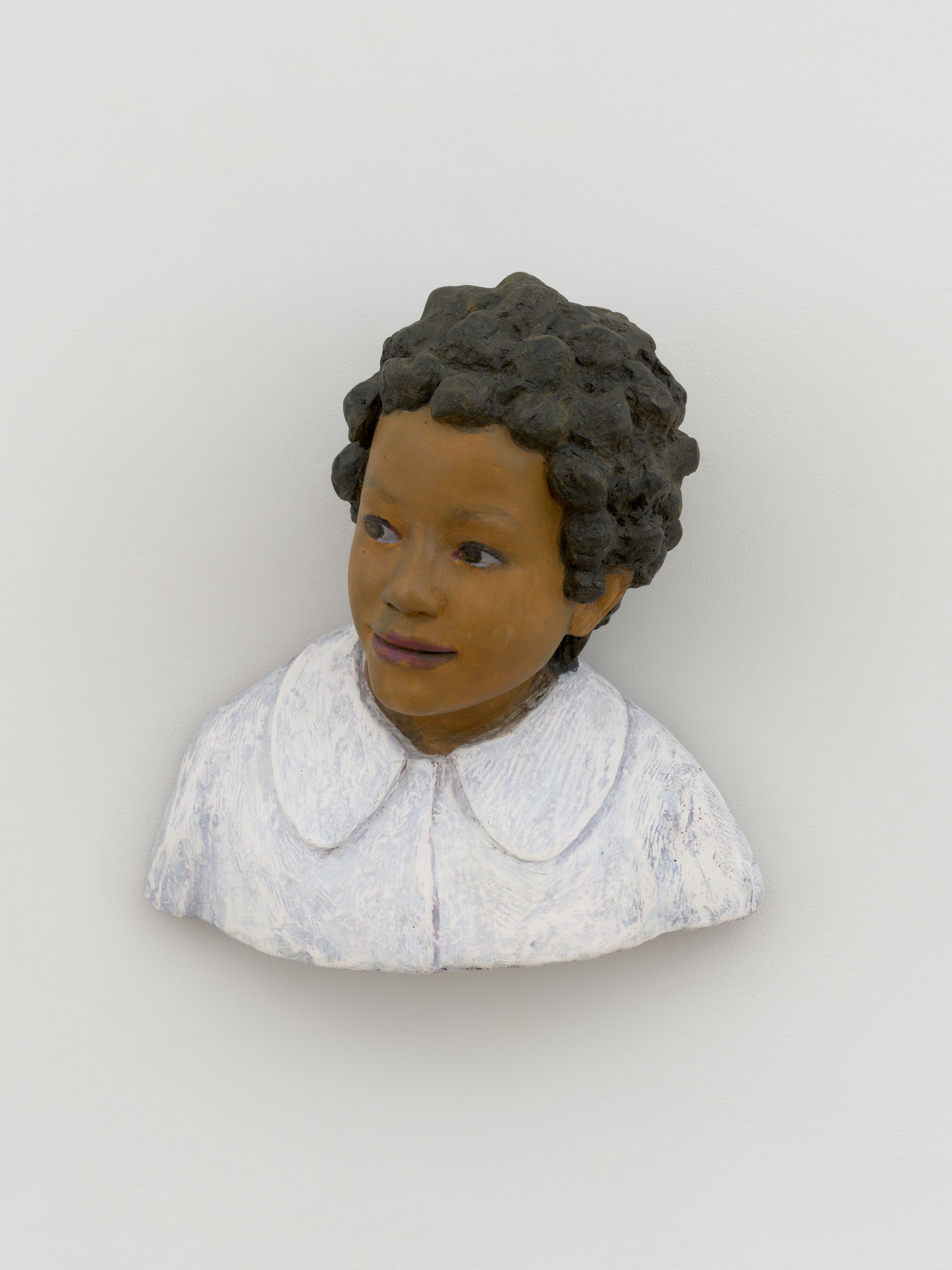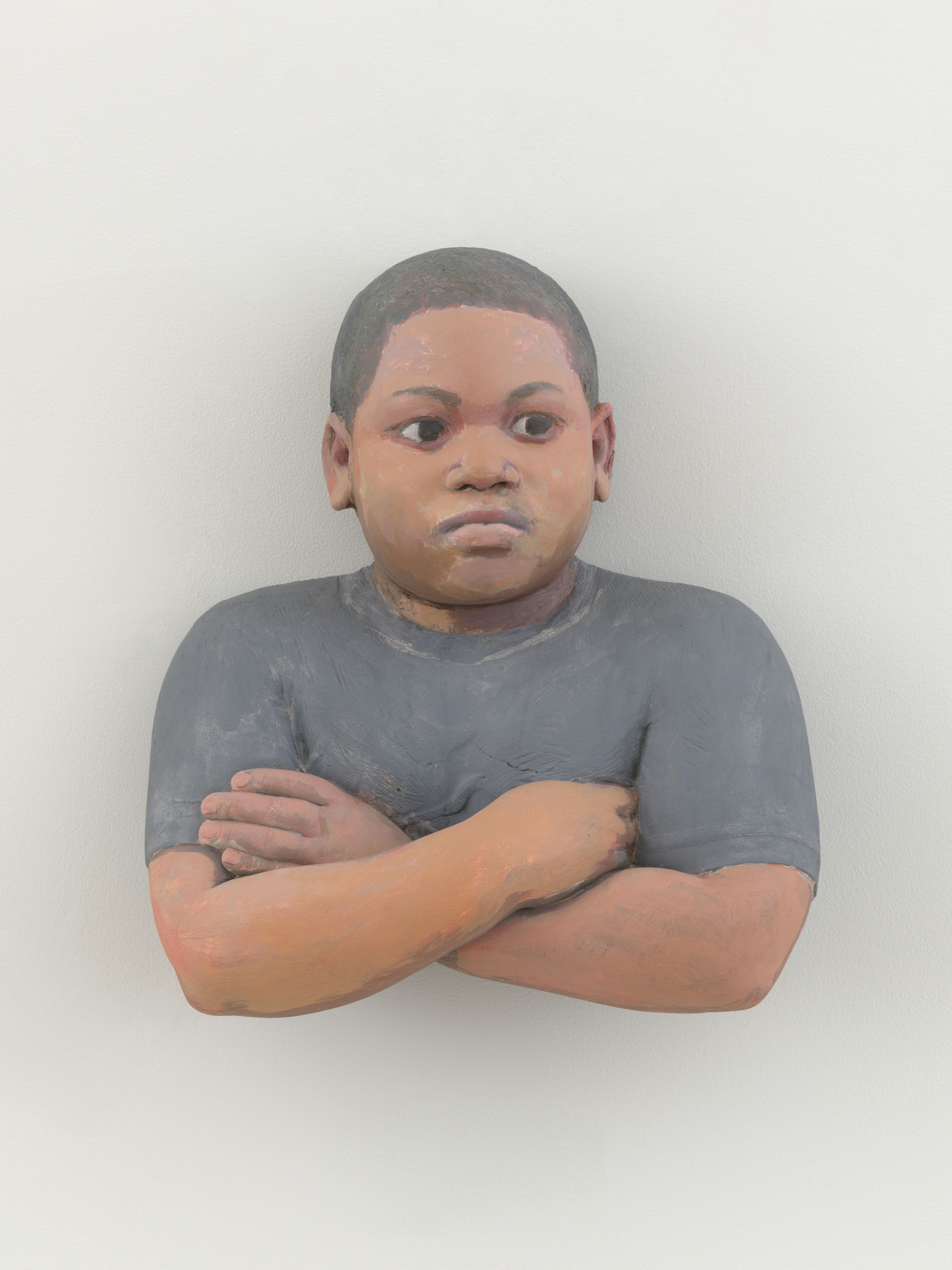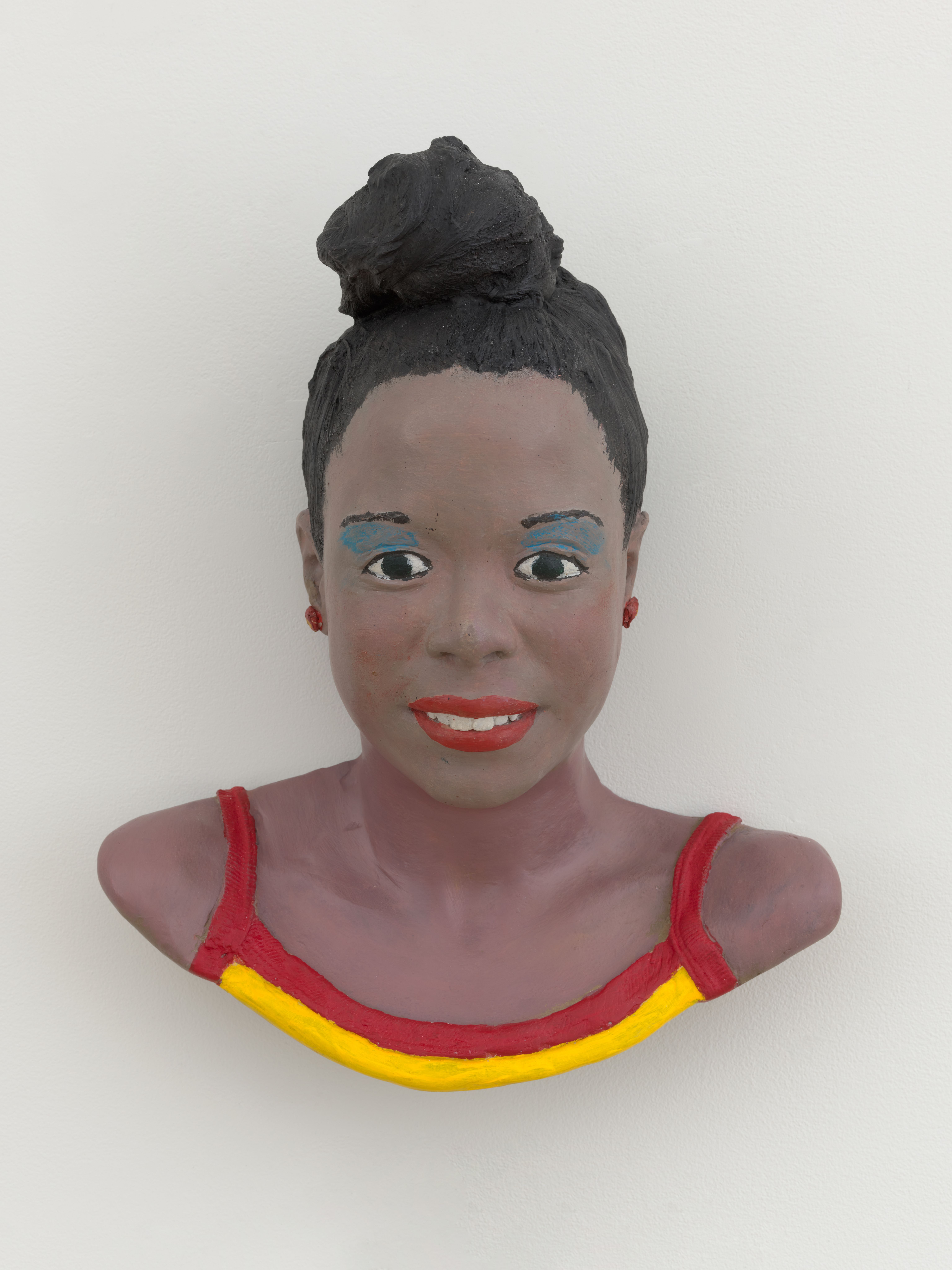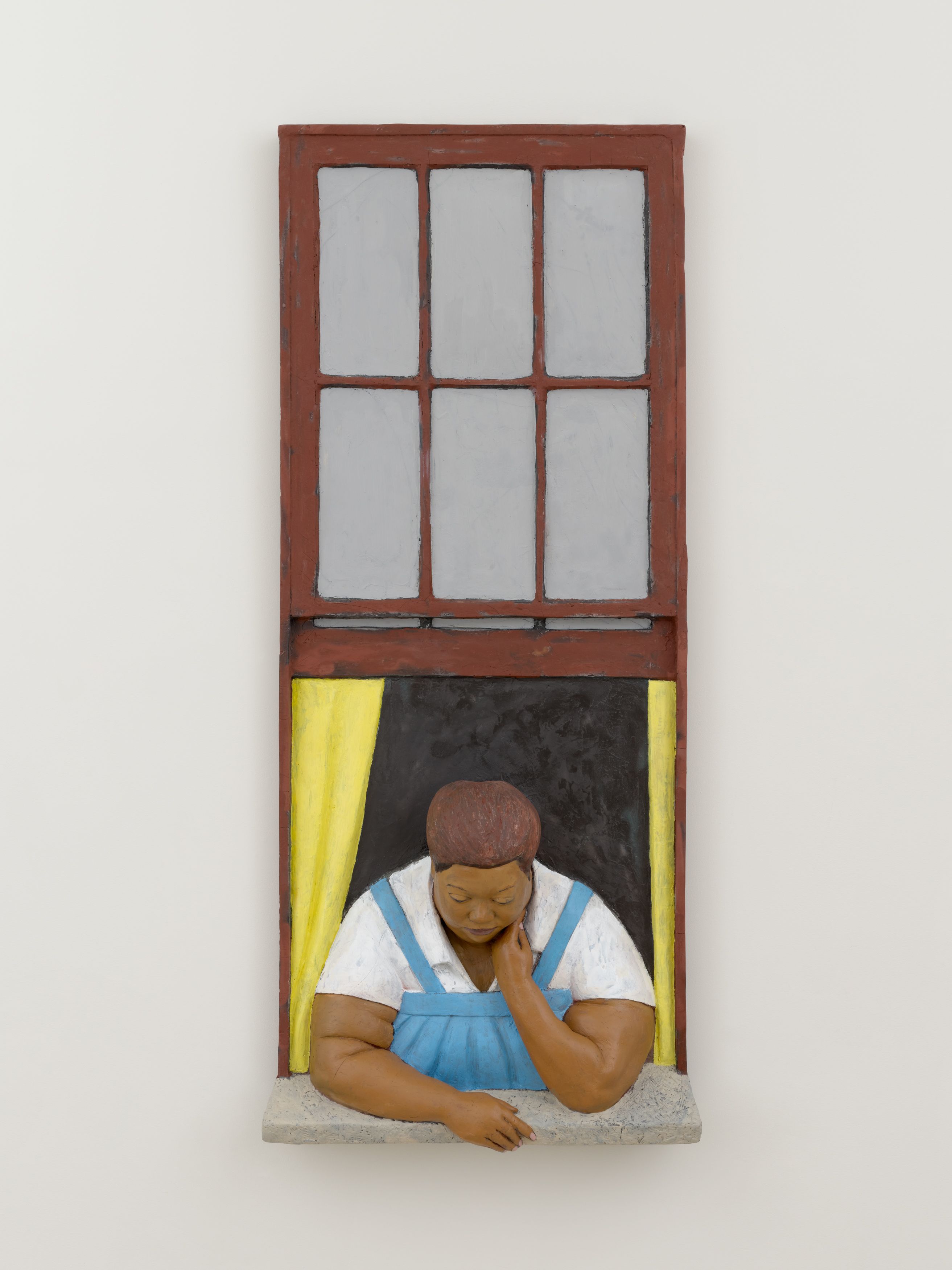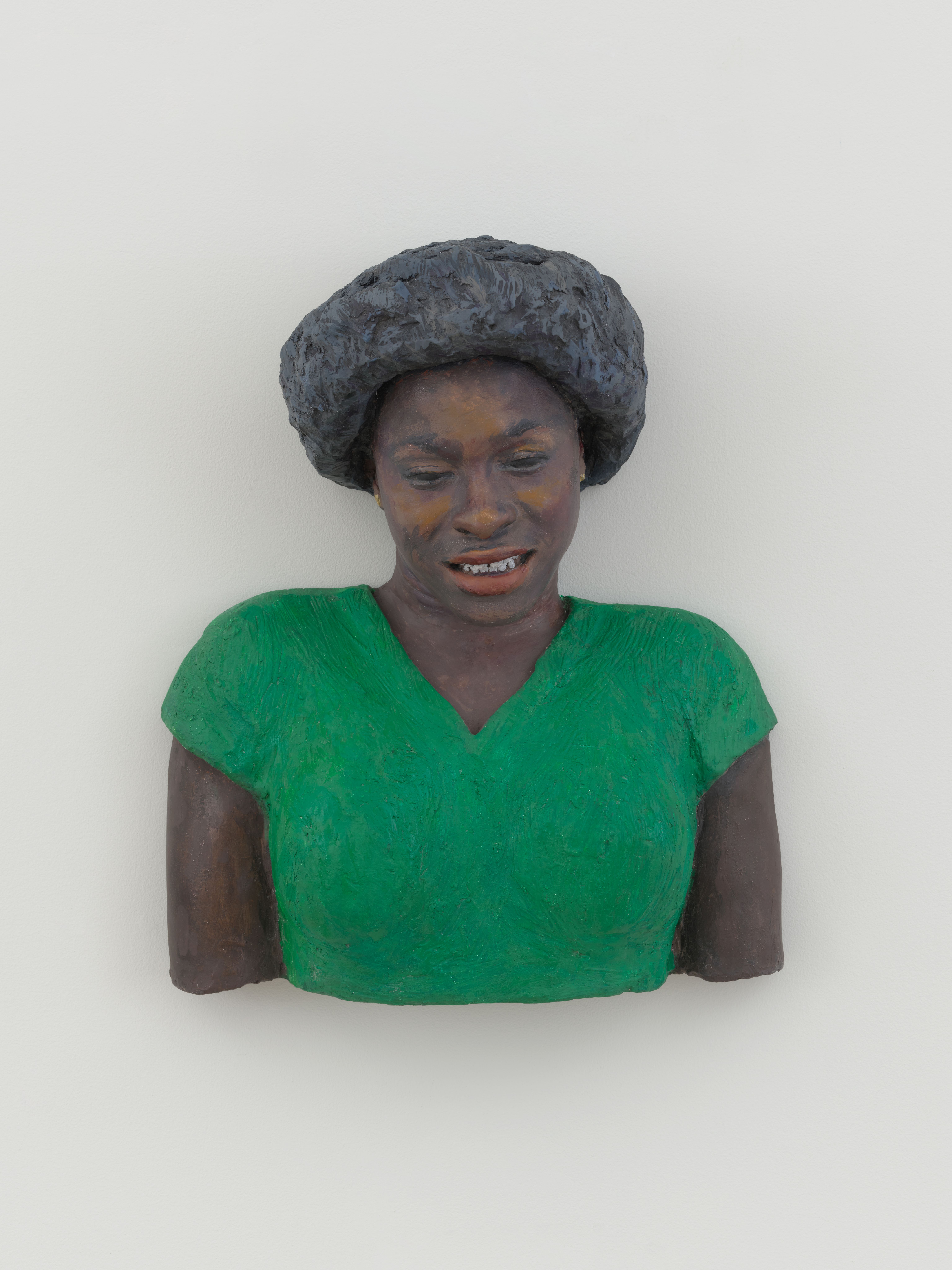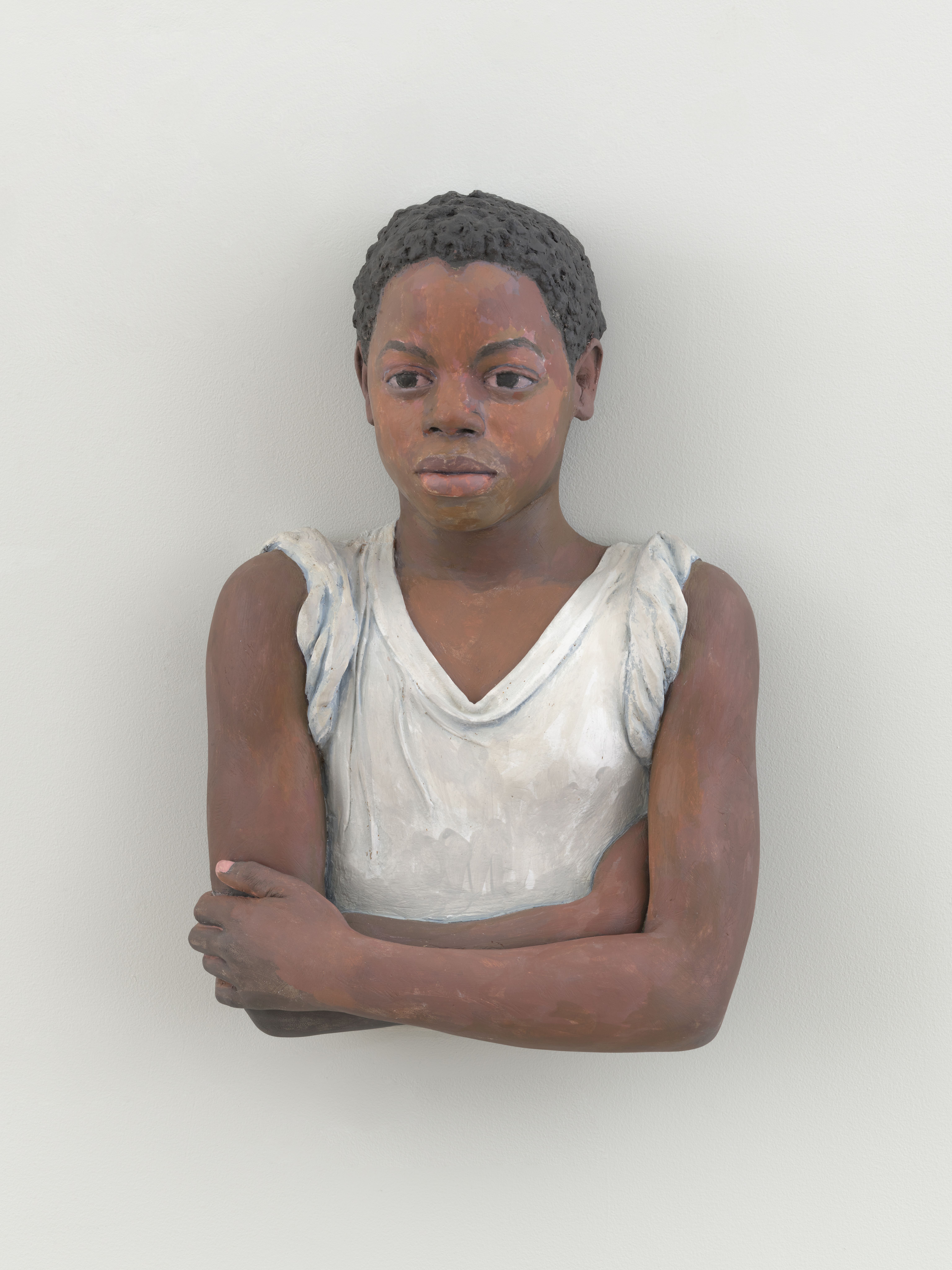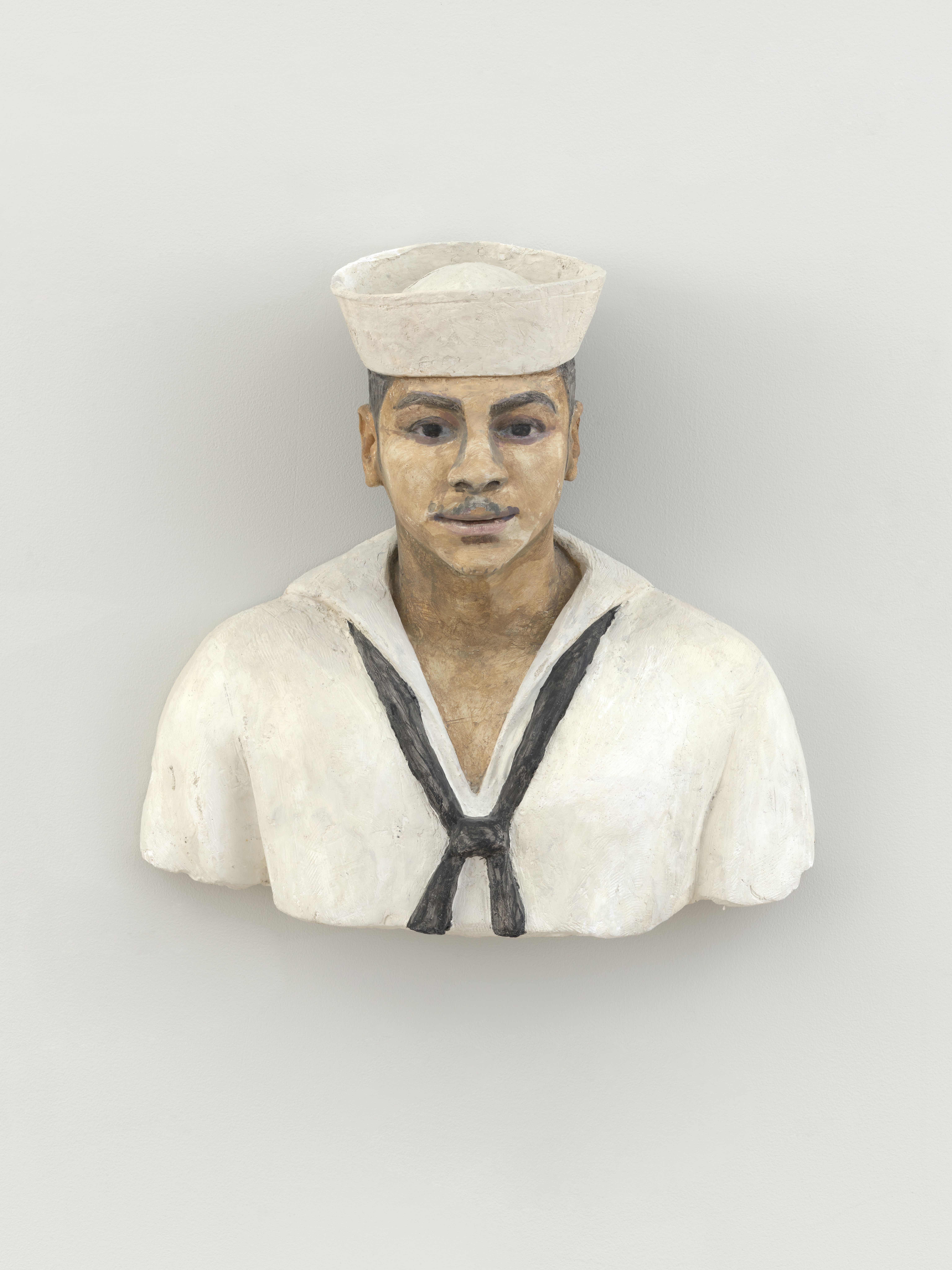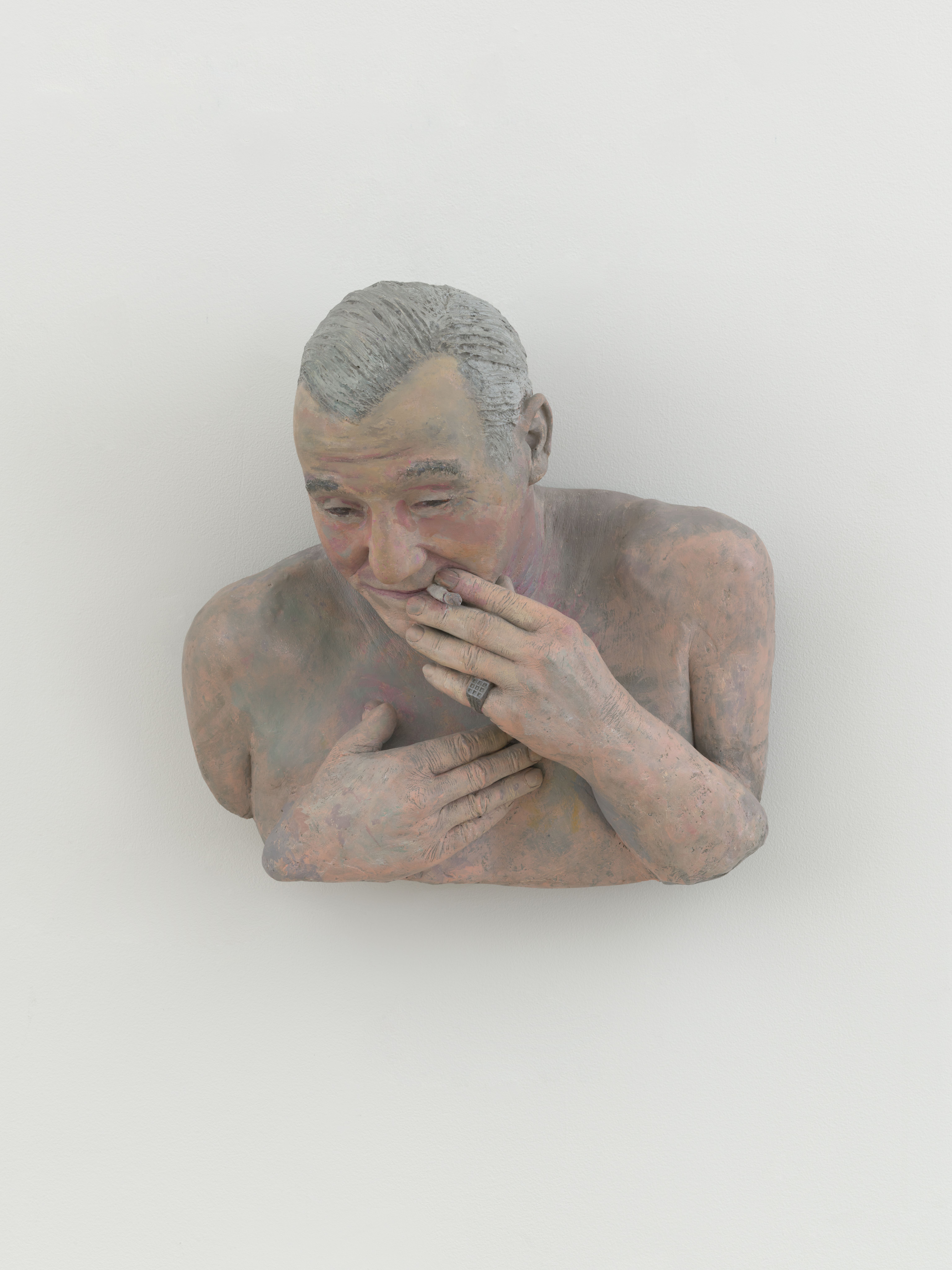Independent 20th Century
Presenting two decades (1979–1998) of life-cast sculpture portraits by the celebrated Bronx artists John Ahearn and Rigoberto Torres
Installation Views
Artwork
John Ahearn and Rigoberto Torres (1979 – 1998)
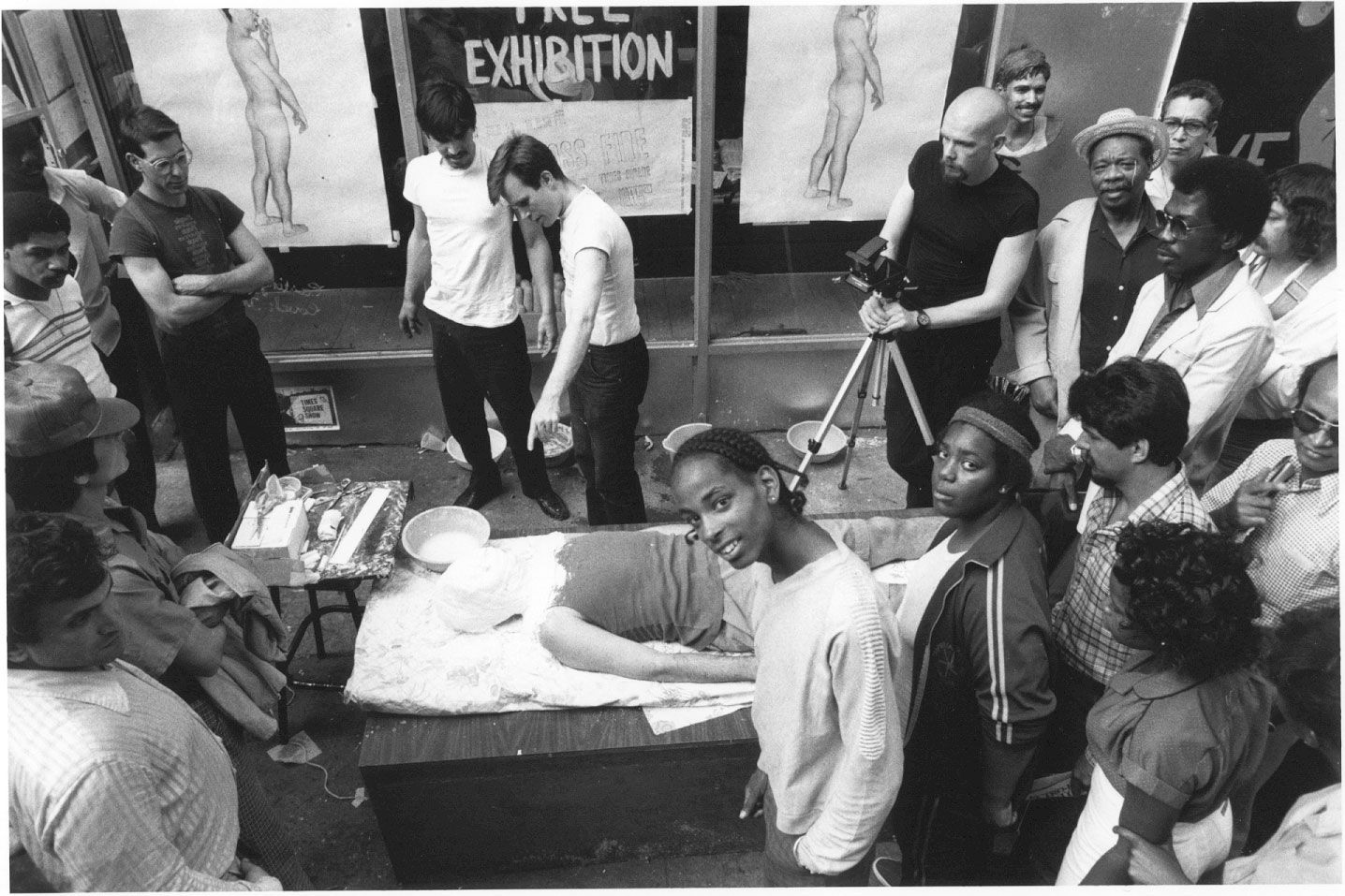
Rigoberto Torres (center left) and John Ahearn (center right) casting outside The Times Square Show, New York, 1980. Photo by Wolfgang Stahle. Courtesy the artists.
Salon 94 presents nearly twenty years of life-cast relief plaster portrait busts by the celebrated sculptors John Ahearn and Rigoberto Torres. Following their fated 1979 encounter at the South Bronx alternative art space Fashion Moda—where the artists first cast ordinary people from the neighborhood—Ahearn and Torres embarked on a nearly four-decade-long collaboration extending deeper into the Bronx, across New York, and around the world. From each location, the artists’ individual and collaborative practices consistently center working-class Black and Latinx subjects—historically overlooked and undervalued in American visual culture—highlighting the dignity, reverence, and sometimes even humor of each subject in their respective portrait.
The artists became famous for their street side workshops in which they cast people from the neighborhood in block-party-style happenings, necessitating each subject’s complete vulnerability and trust as they were rendered immobile during the plaster casting process. The finished portrait is as much an expression of Ahearn and Torres’ empathetic approach to art making as it is a testimony to the resilience of each individual in the face of great discomfort and fear. The reciprocal nature of the casting process also strengthens a shared sense of community, as each sitter is sent home with a richly painted proof: undeniable evidence of their worthiness to exist made eternal through sculpture.
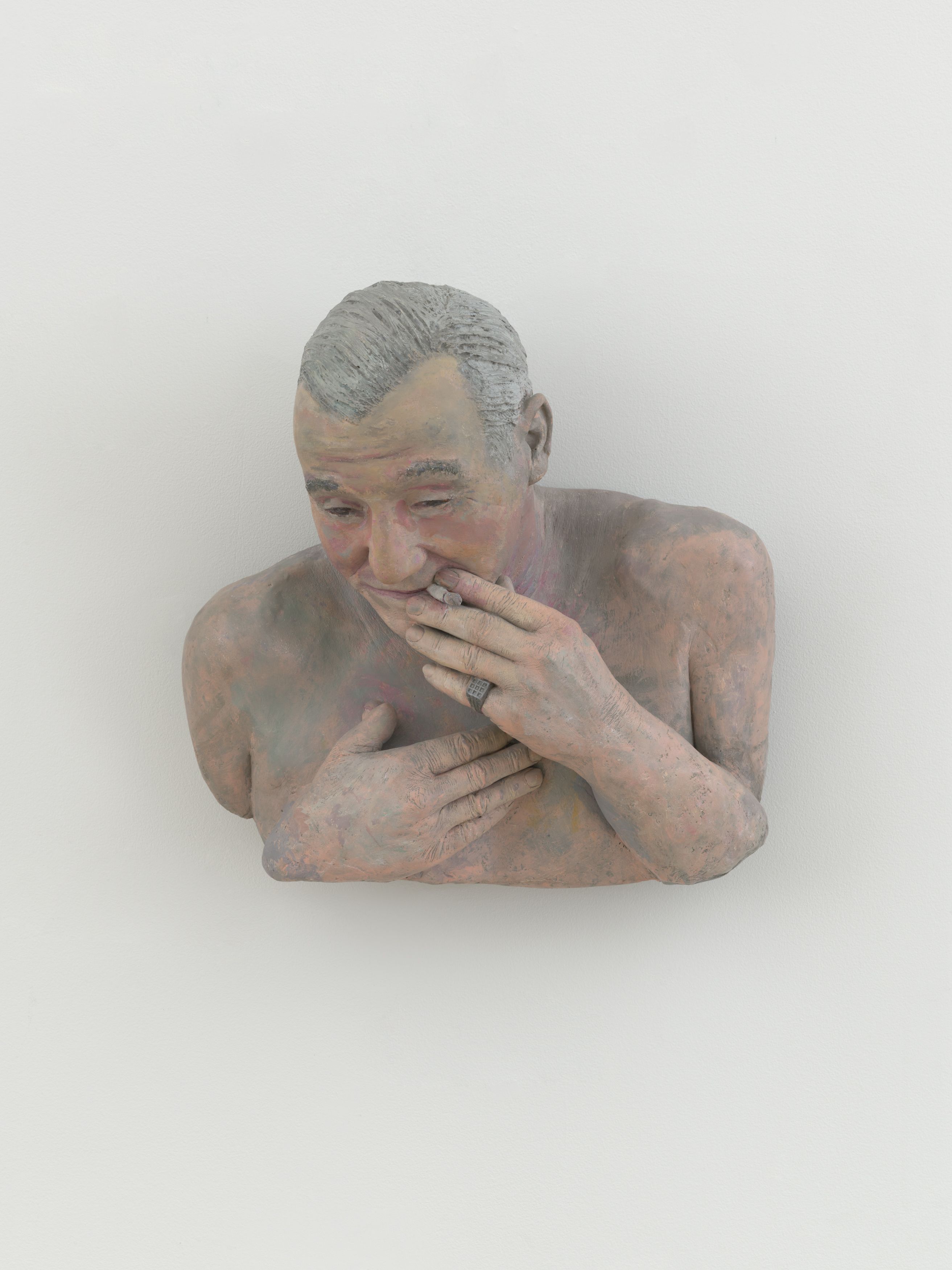
John Ahearn, Eddie Moshier, 1979
Immediately following his residency at Fashion Moda, Ahearn briefly returned to live and cast at his East Village apartment shared with the legendary actress and gallerist Patti Astor. His return also reconnected him with the radical, self-funded artist communities of the downtown scene of which he was a member prior to his Fashion Moda days: namely Collaborative Projects, Inc. (Colab) and Club 57. It was at Club 57, a no-budget arts and music venue located in the basement of a Polish church at 57 St. Marks Place, where Ahearn would screen some of his earliest short artist films, including Bronx Train (1977), which tracked a frenzied ride from Lower Manhattan, as well as a series of interviews with transients in Scranton, Pennsylvania conducted during a brief sojourn there in 1977. Both films attest to Ahearn’s deeply humanistic approach to his practice, both in film and sculpture. During this period Ahearn met septuagenarian Eddie Moshier and invited him back to his apartment to be cast. The resultant portrait is sensitively rendered with realism and gravitas. His shirtless torso and downturned face are fissured with signs of aging; despite this, Moshier’s pinky ring, cigarette, and sleekly combed hair express his indisputable cool. Ahearn’s treatment of Moshier as a subject, as well as his subsequent casts, recalls the paintings of his artistic predecessor Alice Neel (as noted by Hilton Als), whose portraits of largely overlooked members of society brilliantly and simultaneously convey their beauty and awkwardness. Moshier’s portrait is a major work from this period and was included in The Museum of Modern Art’s Club 57 exhibition in 2017.
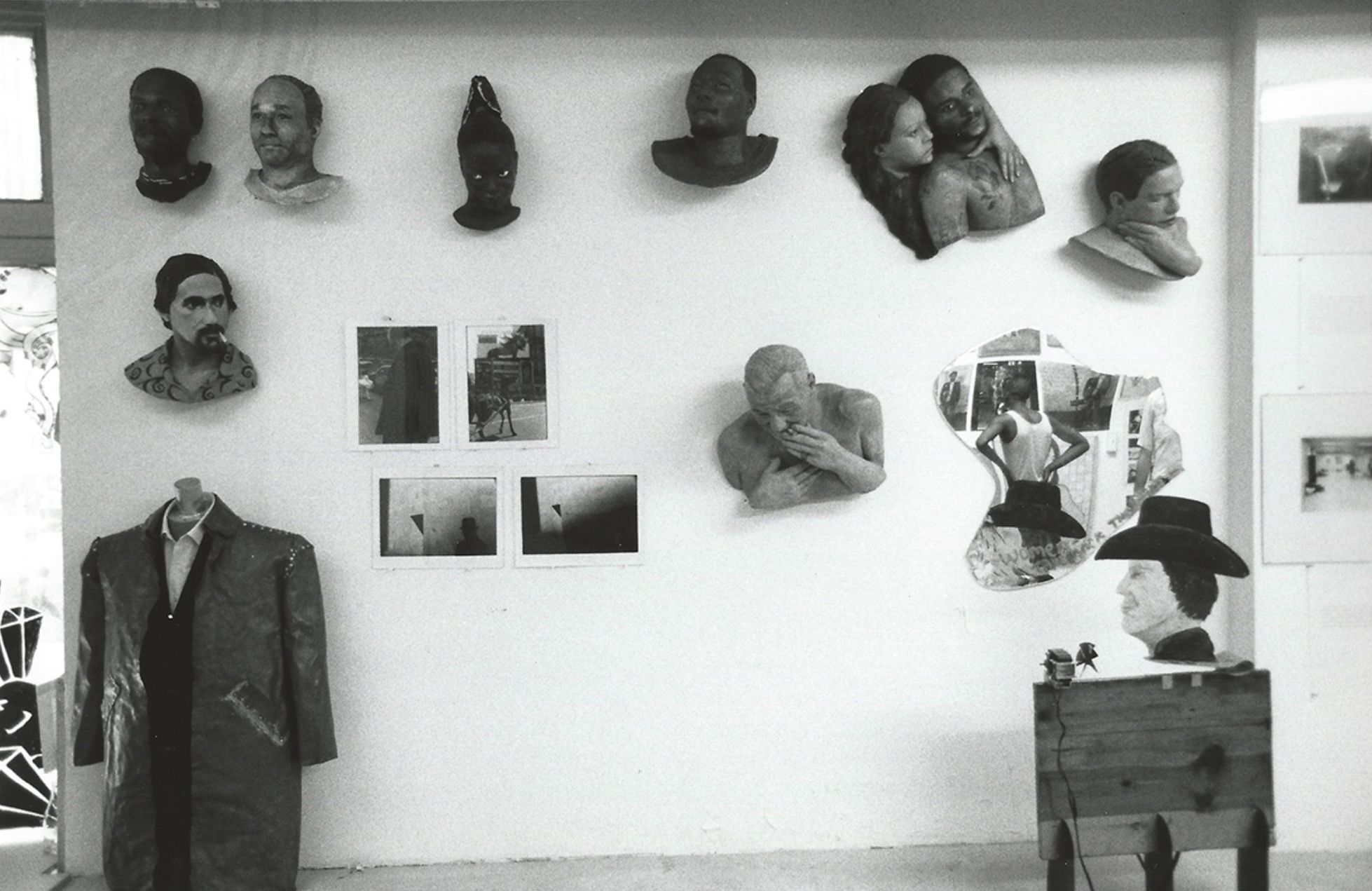
"Times Square Show", organized by Collaborative Projects, Inc. (Colab), New York, 1980. Image courtesy John Ahearn.
Eddie Moshier (1979) was soon installed at the influential 1980 Times Square Show organized by Colab. The guerilla-style exhibition, called “The First Radical Art Show of the ‘80s” by The Village Voice, featured Ahearn and Torres casting regular people onsite before a wall of portrait busts from The South Bronx Hall of Fame made at Fashion Moda just one year prior. Soon thereafter Torres collaborated with Ahearn on Teri (1980), cast from an elegant dancer and model whose peaceful expression (eyes closed, brow relaxed, lips slightly parted) belies the uncomfortable casting process. Teri embodies what would become the hallmarks of Torres’ individual practice: an almost cartoonish treatment of paint, vibrant color, and a joyful sense of play (Torres notes the three tear droplets as a nod to the subject’s name).
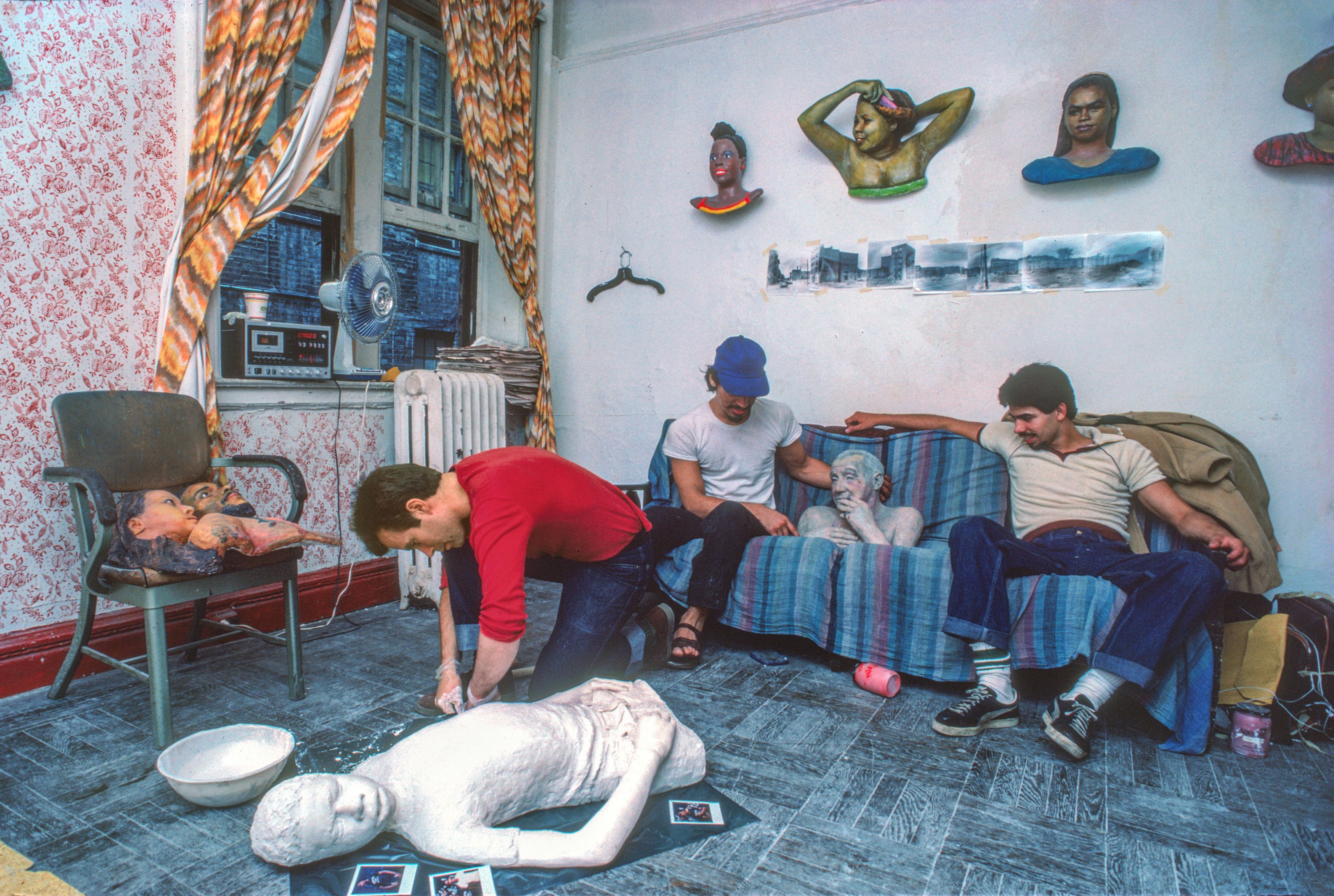
John Ahearn (foreground) with Rigoberto Torres (on couch, left) and David Ortiz, Walton Avenue, Bronx, New York, 1981. Photo by Martha Cooper.
While Ahearn and Torres’ earliest body of life-cast portraits was often produced through chance encounters with people from the street, they also cast subjects (often repeatedly over time) with whom they had ongoing, personal relationships. Myra (1980) one of Torres’ first portraits, was cast from the child of his then-girlfriend, Mina, a mother of three girls who both Ahearn and Torres would cast several times throughout the years. Torres recalls the feminine energy of that family and how the young children loved to play with their mother’s cosmetics and jewelry. A 1981 photograph by legendary photojournalist Martha Cooper spotlights Ahearn and Torres in the former’s Walton Avenue apartment: above Torres is the portrait of Myra, and to her left is Ahearn’s portrait of her mother in the act of grooming herself; taped to the wall below them are scouting images of future public mural sites. Cooper’s snapshot of the early-career artists also highlights the Fashion Moda couple Mario and Norma (1979) as well as Eddie Moshier, who is propped up between Torres and Torres’ cousin, David Ortiz (Ortiz’s exuberant, open-mouthed portrait is perhaps one of the better-known works from The South Bronx Hall of Fame).
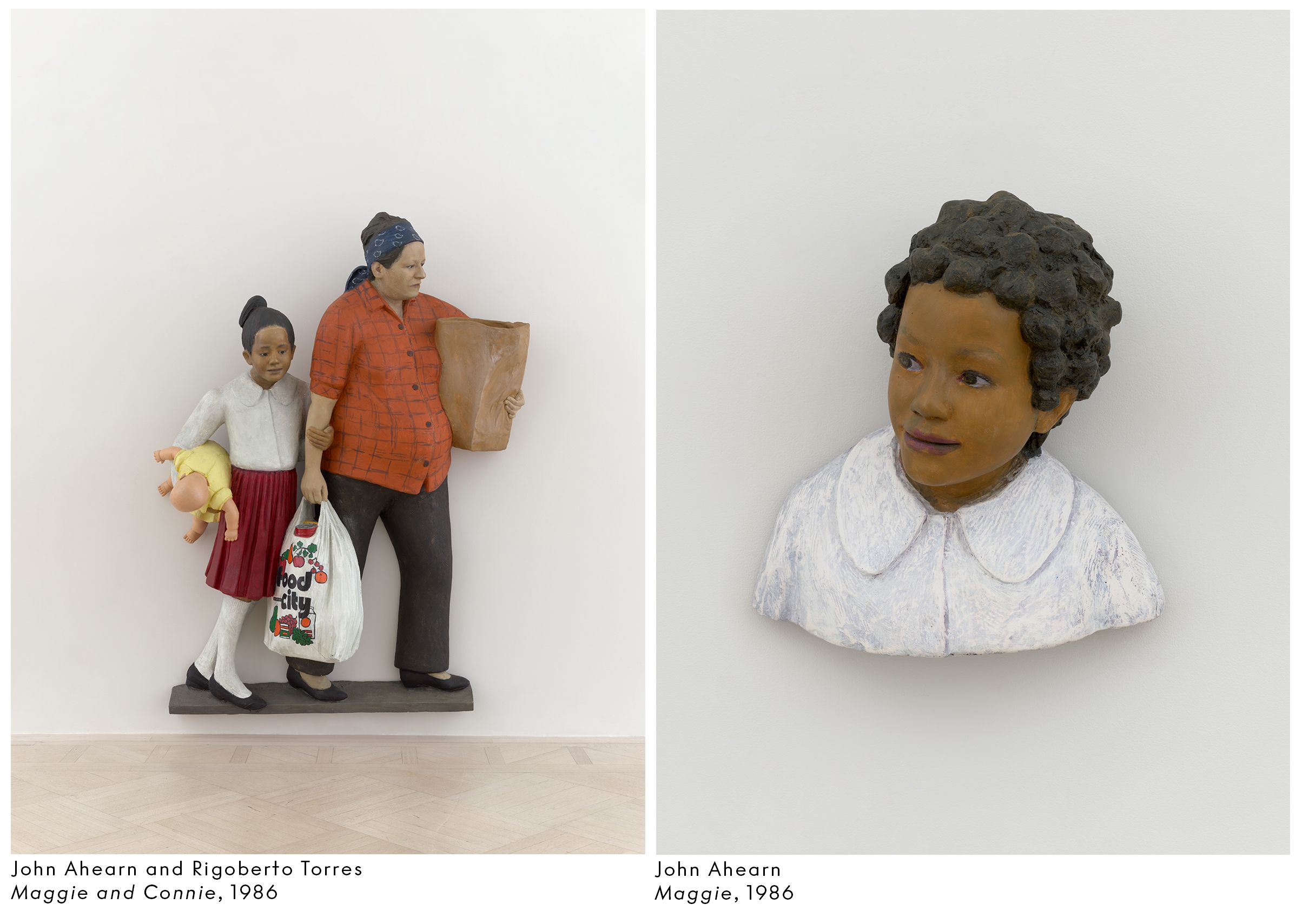
Another Walton Avenue resident is seen here: the precocious Maggie (1986) who lived with her mother in Ahearn’s building. Her portrait was made one year after her debut in Back to School (1985), perhaps one of the artists’ most recognizable Bronx wall murals, which was recently recreated at Salon 94. In a departure from her Back to School days, which sees the schoolgirl gripping the arms of her indefatigable mother, Maggie’s solo bust still dons her signature white Peter Pan shirt collar—except now she radiates an atmosphere of self-assurance and curiosity, her head cocked to one side while her lips curve into a clever smile. She is a prime example of Ahearn’s keen understanding of subtle emotional cues, strengthened by his people-driven practice.
Later in 1993 Ahearn and Torres were invited by Creative Time to participate in the 42nd Street Art Project, which saw artists making and exhibiting across Midtown. Moving indoors, the artists occupied a defunct sub shop for nearly a year and again attracted crowds of mystified pedestrians eager to participate. In a nod to their earliest street castings in which the artists would hang portrait busts onto brick walls as a calling card to alert the neighborhood of their workshop, Ahearn and Torres again installed a group of busts above the store’s entrance for the duration of their residency, including Sailor Vincent (1986), originally cast on Walton Avenue.
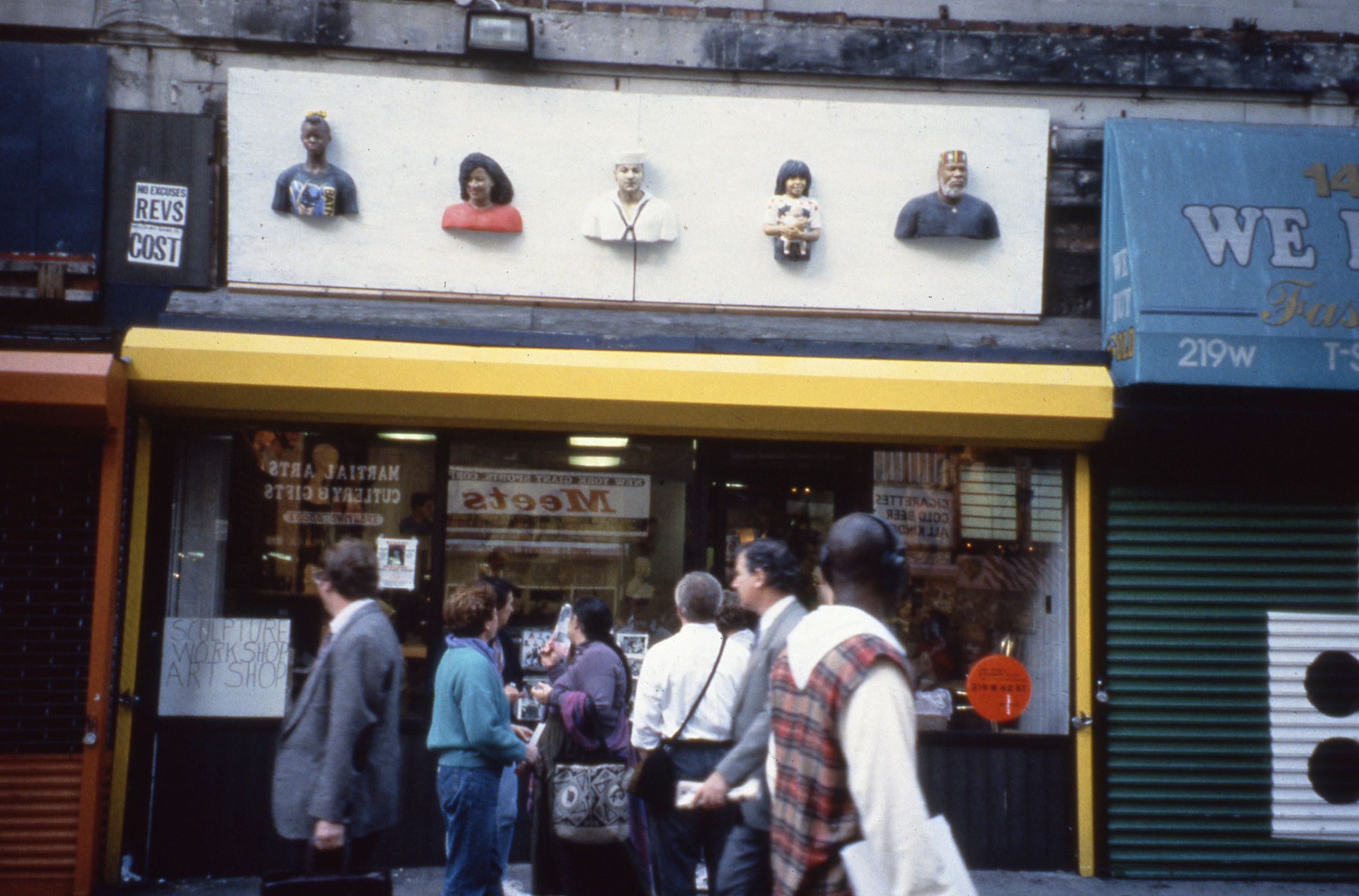
John Ahearn and Rigoberto Torres, 42nd Street Sculpture Workshop for 42nd Street Art Project, New York, 1993. Photo by Maggie Hopp. Courtesy of Creative Time.
Following their sojourn with Creative Time, the artists continued their indoor studio practice in Harlem on East 100th. As Ahearn reported to Hunter Braithwaite in July 2024, “We had one of our best studios [in Harlem]...where we were on East 100th Street was on a corner, with open access all the way around. There were millions of kids and they wanted to hang out someplace. So we invited them to be in our studio.” Despite retiring their outdoor practice, documentation from the late 1990s shows Ahearn and Torres, along with their longtime studio assistant Kevin Crocker, leading lively casting sessions with unhoused children from a nearby shelter, many of whom became fixtures in the space.
These focused, indoor castings retained the same spirited energy of the streetside Bronx workshops. Shaddy and Isaiah (both 1998) are exemplary of this period and gracefully point to the artists’ tender treatment of their subjects and ability to express the immaterial. Despite their crossed arms, each boy is absorbed in thought, perhaps lost in dreams of fantasy or the future. In capturing the physicality of a subject through the life-casting process, the portraits of Ahearn and Torres record specific moments in time, monumentalizing the hundreds of subjects who have enriched their lives for nearly forty years.
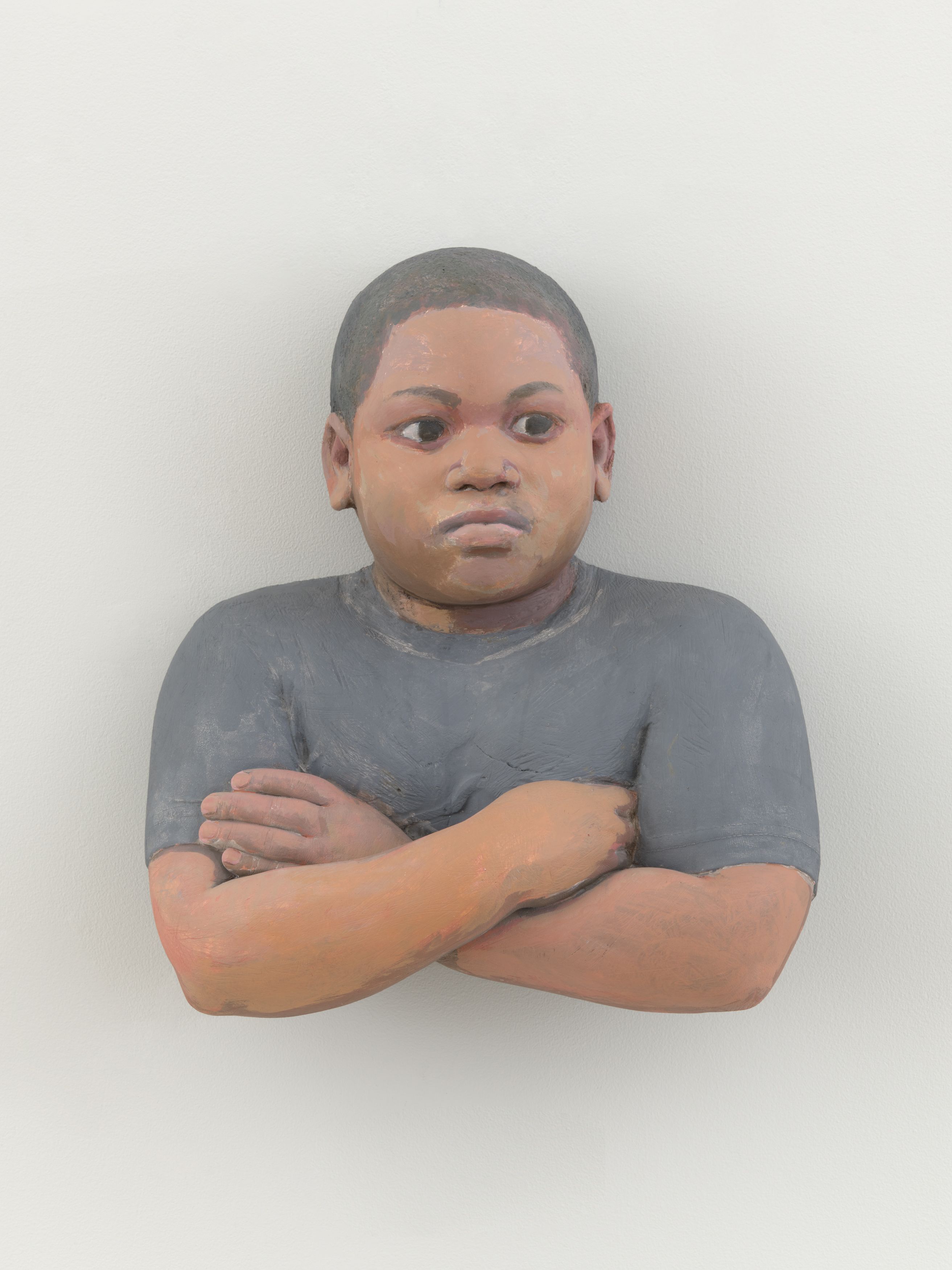
John Ahearn, Shaddy, 1998

John Ahearn (second from right) at his East 100th Street studio with the subject of Shaddy (third from left) and other neighborhood kids, Harlem, New York, 1999.
For more information about the work of John Ahearn and Rigoberto Torres, please contact Nicolas Ochart.
Press
Independent
